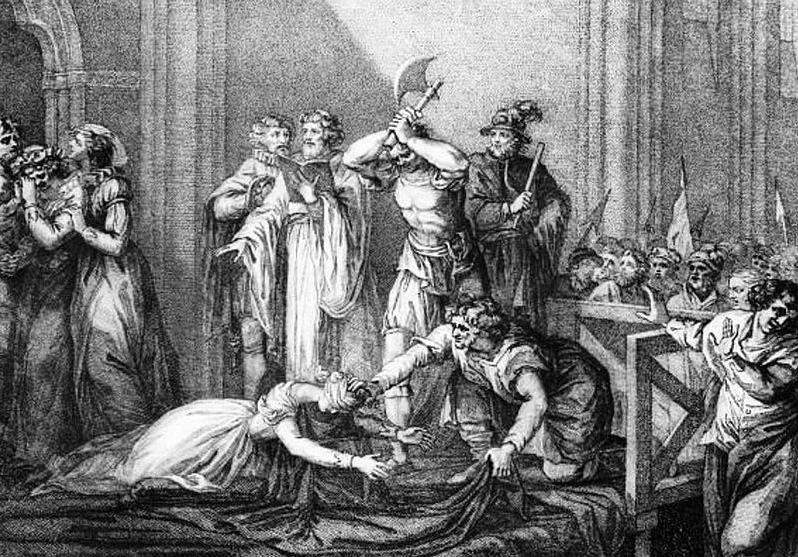
While I know that most of you want me to get into the gory details about Mary’s death, I’m going to first give a quick back story as to who Mary was.
Mary ascended to the Scottish throne in 1542 when she was a mere 6 days old. Mary’s father, King James V, had passed away. Mary’s mother sent her to be raised in the French court while her mother ruled in her absence.
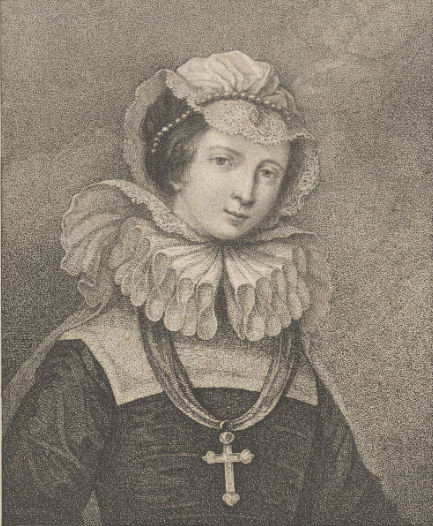
She married in 1558, but the following year her husband, King Francis II of France, passed away.
Mary then returned to Scotland and, in 1565, she married an English cousin, Lord Darnley.
Death seemed to follow Mary because two years later her husband was killed during a questionable explosion at Kirk o’Field.
That same year, Mary married her lover, the Earl of Bothwell, and pissed off the nobles.
Mary then raised an army against the nobility, lost, and was imprisoned in Lockleven, Scotland. She escaped captivity, raised another army, and was defeated again. This time, however, she fled to England.
Queen Elizabeth I welcomed Mary into her life, but it was soon discovered that Mary was exploring plots to overthrow Queen Elizabeth and she was placed under house arrest for 18 years
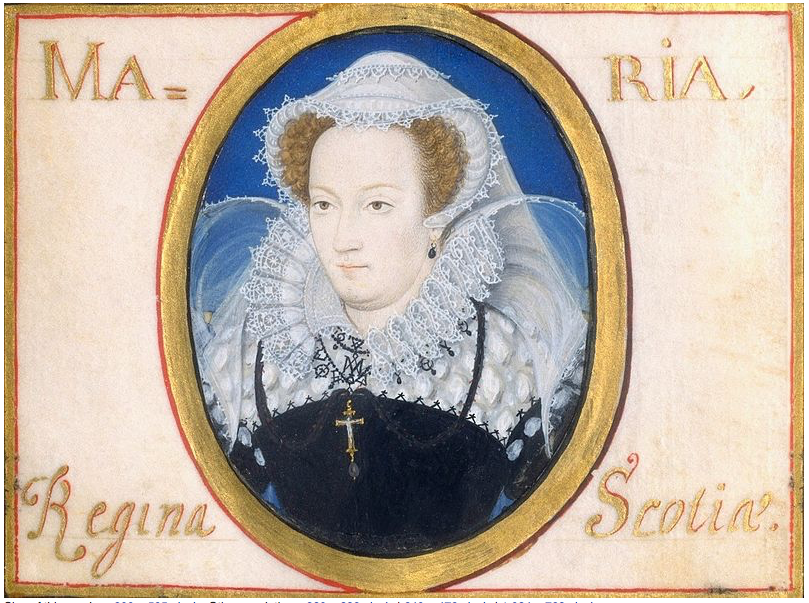
You see, as a Catholic, Mary did not believe in divorce and so when King Henry VIII divorced his first wife and married Anne Boleyn, Queen Elizabeth became viewed as an illegitimate child of the King. Mary, as well as many of her Catholic supporters, felt that Mary, not Elizabeth, belonged on the throne of England.
In 1586 she was sentenced to death for her major part in the latest plot to murder Queen Elizabeth I.
About a year later, representatives of Queen Elizabeth arrived at Fotheringhay Castle where the 44-year-old Mary was being held. They announced that Mary was to be beheaded the following day.
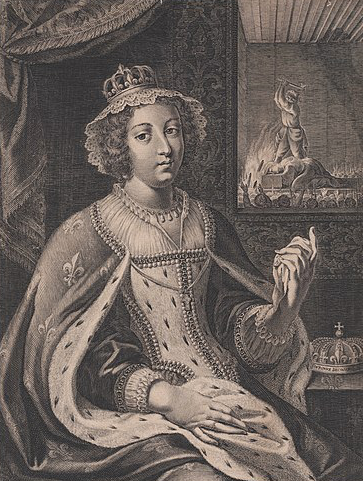
Mary thanked them and said that she was happy to hear that there would be an end to her captivity. She then asked the Queen’s representatives for more time to put her affairs in order. To which the Count of Shrewsbury replied, “No, no, Madam you must die! Be ready between 7 and 8 in the morning. It cannot be delayed a moment beyond that time.”
For the rest of the day and into the early morning, Mary spent her time writing letters to family and friends and praying.
She was then taken to the Great Hall that had been set up for her execution. A scaffold was erected in the middle of the large room filled with over a hundred observers.
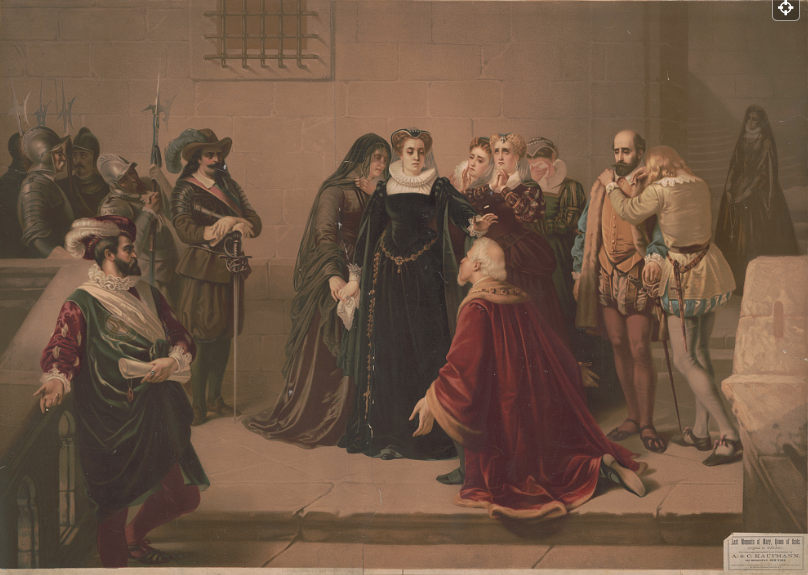
On February 8, 1587, Mary seemed calm and maintained her royal appearance upon entering the Great Hall.
What happened next is retold in varying ways, but the basic story is that Mary stepped onto the scaffold and asked to speak to her chaplain. Her request was denied. Instead, she was offered a Protestant minister. Being Catholic, she rejected the offer.
Mary then asked her ladies-in-waiting to help her disrobe, but, according to one telling, the executioner stepped forward to do the deed and Mary cried out, “Nay, my good man, touch me not!”
Her ladies-in-waiting helped remove her outer garments and as they undid her black gown, a crimson gown, the color of martyrs, was uncovered.
The executioner then dropped to his knees and asked her forgiveness which she gave him and all those responsible for her execution.
Mary kissed her ladies-in-waiting one last time and one of the women tied a gold-bordered handkerchief over her eyes.
Mary knelt down. She prayed in Latin and when she was done she laid her head on the block.
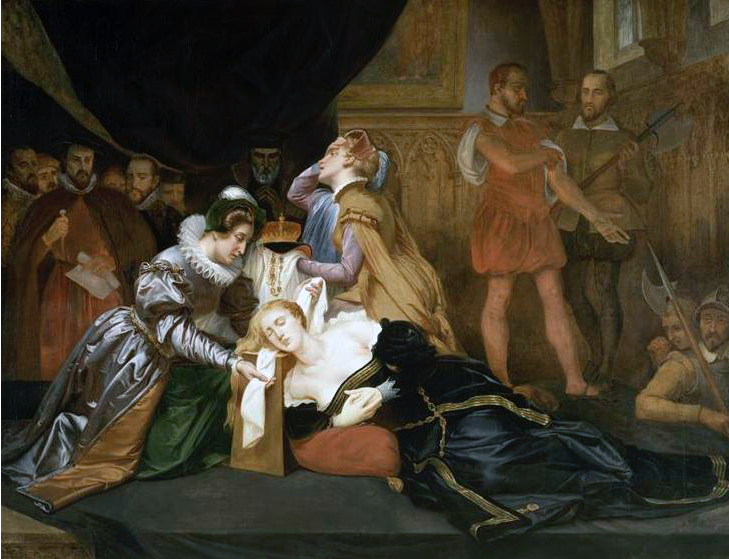
While Mary repeated her prayer softly to herself, the executioner lifted the axe and let it fall. Instead of taking off her head in one swift motion, the executioner missed her neck, grazing only her head.
Mary was heard to say, “Sweet Jesus.”
The executioner raised his axe again and on the second blow he struck her neck but failed to sever her head from her body.

Possibly enraged by his own incompetence, the executioner proceeded to saw through the rest of her neck until the head was freed.
The head rolled off and her body fell onto its back, squirting out blood.
The executioner cried out, “God save Queen Elizabeth! May all the enemies of the true Evangel thus perish!” He tried to pick up the head by the hair, but the head rolled away from him and all he had in his grasp was Mary’s red wig.
After the gruesome deed was finished, Mary’s head was placed on a velvet cushion and displayed on an open window at Fotheringhay Castle.
All of her belongings, including the execution block, were taken to the courtyard and burned.

